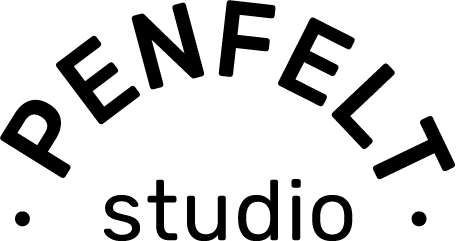How to choose a Needle Felting Starter Set
Are you itching to start needle felting but not sure which starter kit to buy? In this post, PenFelt Studio founder LeBrie Rich explains the three things a starter kit must have, and the additional supplies that add spark (but aren’t strictly necessary).
Three things every needle felting starter set should have
The fiber. Pick a set that is stocked with carded wool milled especially for needle felting. You’ll want a palette of colors that appeal to you, but don’t overspend on a “completion set” with little bits of 40+ colors. You’ll end up never using a bunch of them (that taupe???) and quickly running out of others (looking at you, black and white). Save money and buy a simple starter kit contains an edited palette and then refill the colors you use frequently.
The felting needles. Make sure your kit has at least 4 felting needles. When you’re first learning, it can be easy to a break a few needles. Don’t worry too much about the gauge of the needles, they should be paired with the fiber that is enclosed.
The felting base. Your kit should come with a foam (or wool felt) base to felt on. A pad 5” x 5” or larger will work fine. Any smaller is too difficult to work on.
Bonus items you’ll find in starter kits
Buying an extra special gift, or wanting to splurge on yourself? If these items are included in your beginner set, it will give you more possibilities for how and what you felt (but are not strictly necessary).
Felting Grip. A felting grip is a handle that makes the felting needle more comfortable to hold. A grip is great if you are doing a ton of felting or have tendon issues in your elbow. Make sure the grip is designed to have replaceable needles.
Multi-needle felting tool. A multi-needle tool holds several needles for faster felting. Professional felters often use these tools to speed up production. Also handy if you’re trying to get a bunch of gifts made by a certain date!
Specialty textural fibers. Curly locks, Nepps, and hand-dyed fiber add spunk, color and texture to your felting projects.

